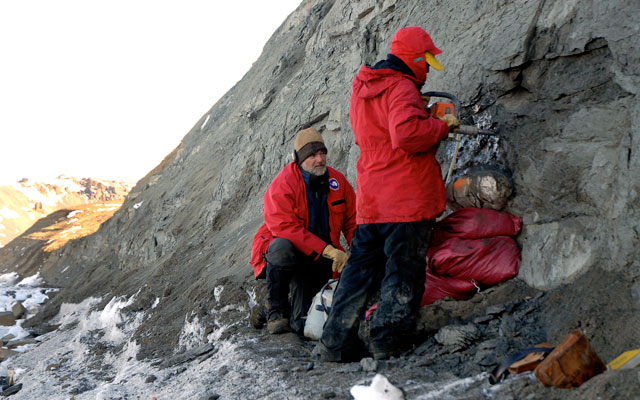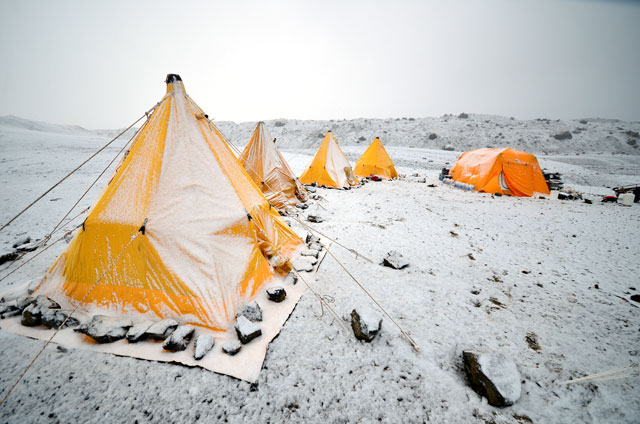Yup. Really, really big.
Lin
This is BIG!
On Fri, Aug 26, 2011 at 4:03 PM, Lin Kerns <linkerns@gmail.com> wrote:
Before the end
Scientists find evidence of extinctions prior to impact event that killed the dinosaurs
By Peter Rejcek, Antarctic Sun EditorPosted August 12, 2011Few topics in science are as hotly debated as the extinction of the dinosaurs 65 million years ago.
However, evidence continues to pile up in favor of the theory first put forth more than 30 years ago that an asteroid impact on Earth dealt a geologically swift blow to the Earth's dominant fauna.
But a team of National Science Foundation
-funded scientists suggests there was at least one "pre-cursor" extinction under way more than 100,000 years before a giant space rock hit the planet — an event known as the K-Pg extinction for when the Cretaceous period ended and the Paleogene began.
The claim comes after four expeditions in as many years to islands off the Antarctic Peninsula, where researchers recovered well-preserved fossils from a stretch of sediments that afforded them a high-resolution look back in time.
"A number of different species all went extinct at one interval prior to the actual boundary," said Thomas Tobin, a PhD student at the University of Washington in Seattle
and lead author on a recently submitted paper about the pre-cursor extinction.
The creatures that went extinct were invertebrates such as snails and clams, according to Peter Ward
, with the University of Washington in Seattle and co-principal investigator on the project.
 Photo Credit: Sarah SlotznickScientists Joe Kirschvink, left, and Chris Thissen examine the K-Pg boundary on Seymour Island.
Photo Credit: Sarah SlotznickScientists Joe Kirschvink, left, and Chris Thissen examine the K-Pg boundary on Seymour Island."We're seeing two very different types of extinctions going on," Ward said, explaining that the pre-cursor extinction appeared limited to benthic organisms, critters living on the ocean floor. He believes the world underwent a rapid global warming event that eventually affected ocean circulation so that the waters stratified, making the bottom layers anoxic. No oxygen — no life.
They say the link is a major volcanic event — or series of events — that occurred roughly around the same time in an area known as the Deccan Traps in India. Formed between 60 and 68 million years ago from a series of volcanic eruptions, the Deccan Traps consist of multiple layers of solidified volcanic basalt. The massive release of volcanic gases, particularly carbon dioxide, from the eruptions may have created a greenhouse effect.
--
Roxxfoxx~~Adventures in Geology
Penguin News Today
Penguinology: The Science of Penguins
Gentoo Penguins of Gars O'Higgins Station, Antarctica
Canis lupus 101
Dances with Werewolve
Through Golden Eyes
__._,_.___



No comments:
Post a Comment